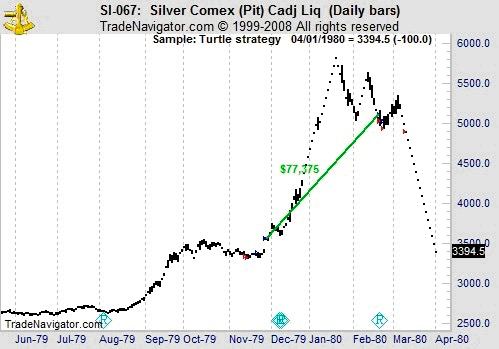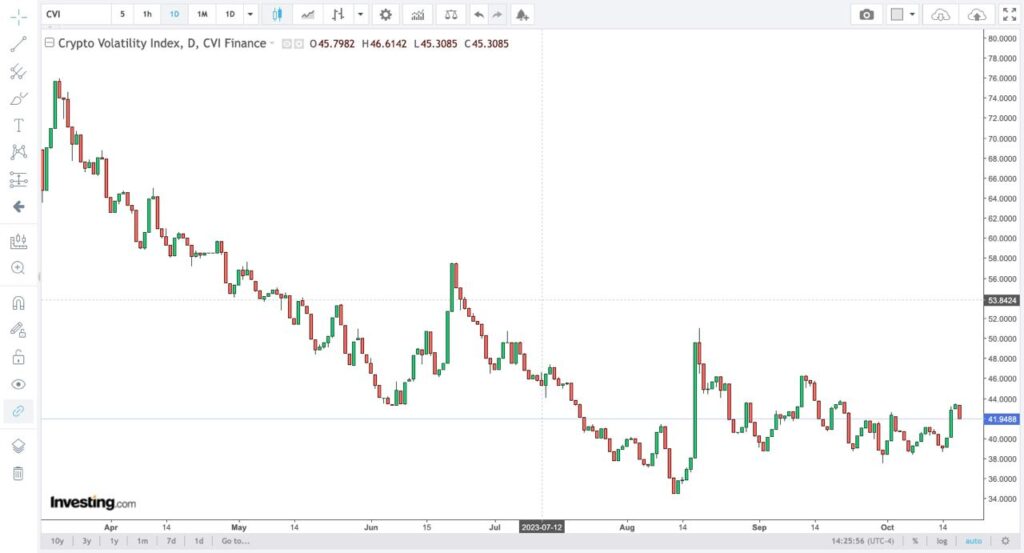Turtle Trading, a renowned trading system developed in the 1980s, has earned a reputation for its disciplined approach and remarkable success in traditional financial markets. As the cryptocurrency market continues to grow and attract investors worldwide, the question arises: Can Turtle Trading principles be effectively applied to navigate the unique challenges of the crypto space? In this article, we explore the core concepts of Turtle Trading, its historical achievements, and its potential applicability in the dynamic and often unpredictable world of cryptocurrencies.
What Is Turtle Trading?
Turtle Trading is a trend-following trading strategy that was developed by legendary traders Richard Dennis and William Eckhardt in the 1980s. The strategy was aimed to teach anyone to become a successful trader using a specific set of rules and principles.

The name “Turtle Trading” stems from the experiment’s inspiration; just like how turtle hatchlings are given a systematic approach to survival as they enter the world, traders following this strategy were given a systematic framework to navigate the financial markets.
The Turtle Trading Experiment was a social experiment conducted by legendary traders Richard Dennis and William Eckhardt in the early 1980s. The experiment aimed to determine whether successful trading could be taught or if it was an innate skill possessed by only a select few.
Richard Dennis firmly believed that he could teach the principles and strategies of successful trading to anyone willing to learn and follow a set of rules. On the other hand, William Eckhardt was more skeptical and believed that trading prowess was something inherent and difficult to impart to others.
To settle their debate, Richard Dennis decided to recruit and train a group of individuals, often referred to as the “Turtles,” in the art of trading. He selected candidates from diverse backgrounds and with varying levels of financial market experience. The group included people who were not professional traders and even some with no prior trading experience.
The Turtles underwent an intensive training program where they were taught the specific rules and principles of the Turtle Trading strategy. These rules covered everything from entry and exit signals to risk management and position sizing. The aim was to instill discipline and consistency in their trading approach.
After completing the training, the Turtles were provided with trading capital and allowed to apply the Turtle Trading system in real markets. They traded various futures contracts, currencies, and commodities, following the rules taught to them during the training.
The results of the Turtle Trading Experiment were astonishing. Many of the Turtles achieved remarkable success and demonstrated the profitability of the strategy. Some of them went on to become successful traders in their own right, which supported Richard Dennis’s belief that successful trading could indeed be taught.
The experiment garnered significant attention and contributed to the popularity of the Turtle Trading strategy, making it one of the most famous and enduring trend-following trading methodologies.
However, it is worth noting that while the Turtle Trading Experiment produced impressive results during its early years, the strategy’s long-term effectiveness has faced challenges and fluctuations in various market conditions. Traders and investors must carefully consider the evolving dynamics of the financial markets and adapt their strategies accordingly.
How Does Turtle Trading Work?
Turtle Trading is a systematic trend-following trading strategy designed to capture significant price movements in various financial markets. The strategy is based on a set of specific rules and principles that guide traders on when to enter, manage, and exit trades.The Turtle Trading strategy imparts a specific trend-following approach, emphasizing that “the trend is your friend.” To implement this, Turtles are trained to buy futures breaking out to higher trading ranges and sell short those breaking out to lower ranges. For instance, a new four-week high would serve as an entry signal.
Here’s a basic overview of how Turtle Trading is implemented to work:
- The strategy advises focusing on price data rather than relying on external sources like television or newspaper commentators for trading decisions.
- Turtles are encouraged to customize the parameters for their buy and sell signals, as different markets may require distinct settings for optimal results based on personal preferences.
- Exit plans are as crucial as entry strategies; knowing when to secure profits and cut losses is vital for effective trading.
- Volatility is factored in using the average true range (ATR) to adjust position sizes. More significant positions are taken in less volatile markets, while exposure is reduced in highly volatile ones.
- Risk management is key, with Turtles advised to never risk more than 2% of their account on a single trade.
- While aiming for substantial gains, Turtles are reminded to be prepared for significant drawdowns along the way. Staying comfortable with such fluctuations is essential to potentially achieving higher returns.
Are Turtle Trading Rules Worth Trying?
The Turtle Trading rules are based on a well-defined and disciplined trend-following strategy that achieved significant success in the early years when applied to traditional financial markets. As such, they can be considered as a potential starting point for traders seeking a systematic approach to trading.
The advantages of the Turtle Trading rules include:
- Systematic Approach: The rules provide a clear and systematic approach to trading, minimizing emotional decision-making and promoting consistency in trading actions.
- Trend Following: Turtle Trading focuses on capturing significant price trends, which can lead to substantial profits if trends continue for extended periods.
- Risk Management: The strategy emphasizes risk management through position sizing and dynamic trailing stop-loss orders, which can help protect capital during market downturns.
- Diversification: By diversifying across various markets and assets, the strategy aims to spread risk and reduce dependency on a single trade.
However, like any trading strategy, the Turtle Trading rules have their limitations and challenges:
- Adaptability to Cryptocurrency Market: While the strategy was successful in traditional markets, its direct application to the cryptocurrency market may require modifications and adjustments due to the unique characteristics and dynamics of cryptocurrencies.
- Volatility: Cryptocurrencies are known for their high volatility, and the Turtle Trading rules may need adaptation to accommodate this increased price fluctuation.
- Changing Market Conditions: Market conditions can evolve over time, and what worked well in the past may not be as effective in the future. Continual evaluation and adaptation are essential.
- Short History of Cryptocurrencies: Many cryptocurrencies have relatively short trading histories compared to traditional assets, making it challenging to backtest the strategy over extended periods.
- Regulatory Risks: The regulatory environment around cryptocurrencies can impact market dynamics, and traders must stay informed about any regulatory changes that could affect their strategy.

Ultimately, the decision to try the Turtle Trading rules or any trading strategy depends on the individual trader’s risk tolerance, trading experience, and understanding of the market. Traders who are interested in exploring Turtle Trading can consider backtesting the strategy on historical data, both for traditional assets and cryptocurrencies, to evaluate its performance and adaptability.
Furthermore, it’s essential to remember that no trading strategy guarantees profits, and markets can be unpredictable. Prudent risk management, continuous learning, and an adaptable mindset are crucial aspects of successful trading. Traders should also be prepared to incorporate other analysis methods and indicators into their trading approach to build a comprehensive strategy tailored to their specific goals and market conditions.
How To Make Turtle Trading Applicable For The Crypto Trading?
To make Turtle Trading applicable for crypto trading, you’ll need to carefully adapt the strategy to account for the unique characteristics of the cryptocurrency market. Here are some steps you can take to make Turtle Trading more suitable for trading cryptocurrencies:
- Adjust Position Sizing and Volatility: Cryptocurrencies are known for their high volatility, so the original position sizing rules based on traditional markets may need to be adjusted. Consider using a smaller percentage of your account equity (N-Unit) for position sizing to account for the increased volatility. Additionally, adjust the ATR multiplier for stop-loss and profit targets to better match the price movements of cryptocurrencies.
- 24/7 Market: Unlike traditional markets with set trading hours, cryptocurrencies trade continuously. This requires modifying the rules for determining daily price breakouts and calculating the Average True Range (ATR) values to account for the non-stop nature of crypto trading.
- Consider Alternative Timeframes: The original Turtle Trading rules were designed for daily and weekly timeframes. In the cryptocurrency market, you may find success with shorter timeframes, like 4-hour or hourly charts due to the faster pace of price movements.
- Evaluate Liquidity: Some cryptocurrencies may lack sufficient liquidity, especially for larger positions. Be cautious about trading illiquid assets as this can lead to execution difficulties and increased risk.
- Backtest and Optimize: Backtest the adapted Turtle Trading strategy on historical cryptocurrency data to evaluate its performance. Use historical data to optimize parameters like entry/exit signals, position sizing, and stop-loss levels to find the best settings for crypto trading.
- Consider Different Markets and Assets: The cryptocurrency market offers a wide range of digital assets. You may want to explore applying the Turtle Trading strategy to various cryptocurrencies or tokens on the market.
- Stay Informed about Regulatory Changes: The regulatory landscape surrounding cryptocurrencies is dynamic. Stay informed about any regulatory updates that could impact the market, as these changes may influence the effectiveness of the strategy.
- Combine with Other Indicators: Consider combining Turtle Trading principles with other technical indicators or fundamental analysis to enhance the strategy’s performance in the crypto market.
- Prudent Risk Management: No trading strategy is foolproof, and cryptocurrency markets can be highly unpredictable. Apply strict risk management principles to protect your capital and limit potential losses.
- Adapt and Evolve: Markets, including the cryptocurrency market, constantly change. Continually monitor and adapt your strategy to evolving market conditions and your own trading experience.
Remember that past performance does not guarantee future results, and trading cryptocurrencies involves inherent risks. Always exercise caution, and consider seeking advice from experienced traders or financial advisors if needed. Proper education, practice, and discipline are essential to successful trading in any market, including cryptocurrencies.
Final Thoughts
Trading using the Turtle Trading strategy can be a viable option for traders seeking a disciplined and systematic approach to capture significant price trends. While the strategy was initially designed and tested in traditional financial markets, adapting it to the cryptocurrency market requires careful consideration and adjustments to account for the unique characteristics of cryptocurrencies.
The cryptocurrency market is known for its high volatility, 24/7 trading, and relatively short trading history compared to traditional markets. As a result, traders should thoroughly backtest and optimize any trading strategy, including Turtle Trading, before applying it to the crypto market.
FAQ
What is turtle trading?
Turtle trading is a well-known trading system developed in the 1980s, based on buying stocks or contracts during a breakout and selling quickly on a pullback or drop in price.
How does turtle trading work?
The idea is that “the trend is your friend”, so you should buy futures outside of trading ranges and sell short breakouts to the downside. In practice, this means, for example, buying new four-week highs as an entry signal.
